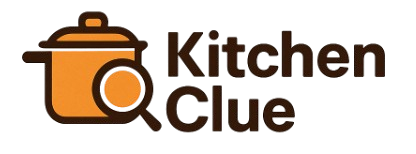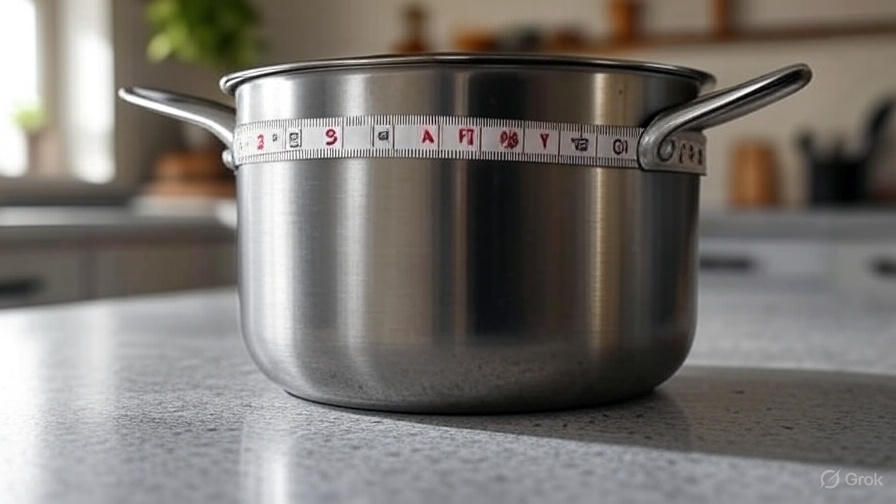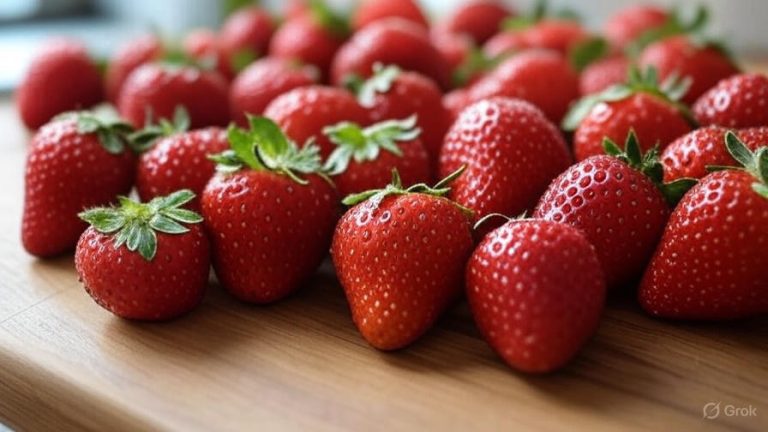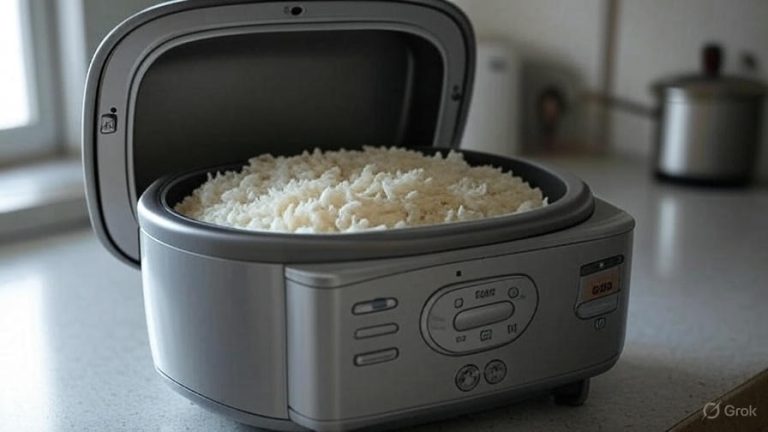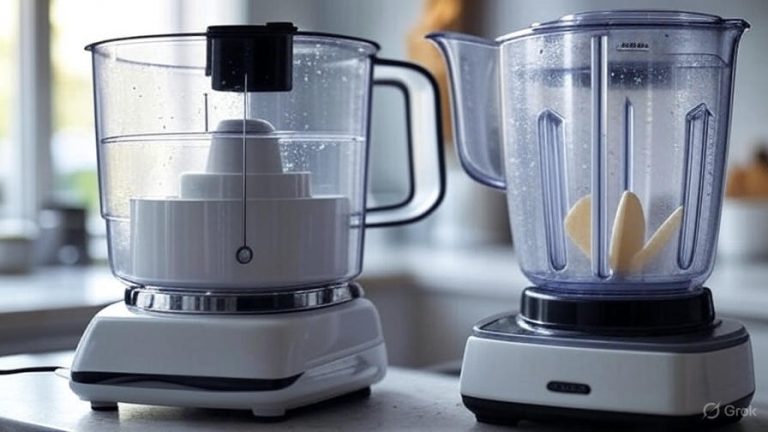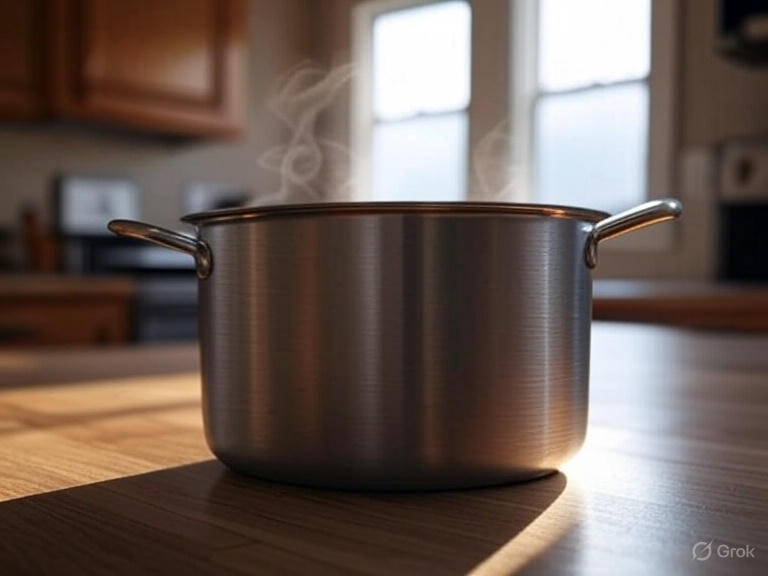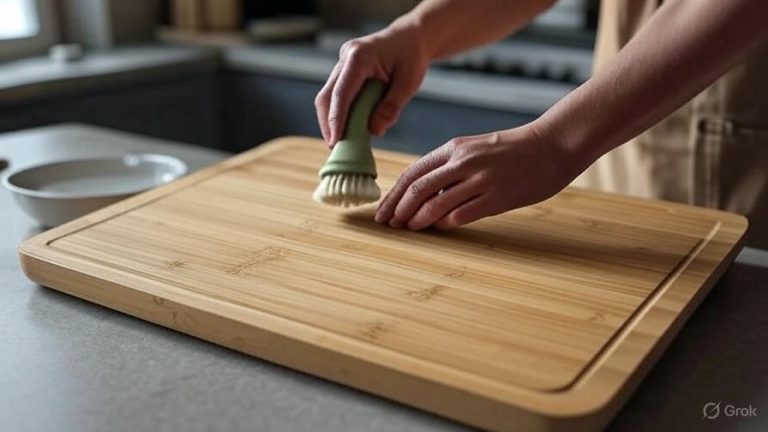How Big Is an 8-Quart Pot?
An 8-quart pot is a kitchen workhorse, but just how big is it? If you’re wondering about its size, capacity, or how it fits into your cooking routine, you’re in the right place. This guide dives into the dimensions, practical uses, and benefits of an 8-quart pot, helping you decide if it’s the right tool for your kitchen. Let’s explore everything you need to know about this versatile cookware, from its physical size to its role in whipping up delicious meals.
What Is an 8-Quart Pot?
An 8-quart pot holds 8 quarts of liquid, which equals 2 gallons or roughly 7.6 liters. It’s a medium-to-large piece of cookware, often used for family-sized meals or batch cooking. You’ll find these pots in various styles, like stockpots, Dutch ovens, or soup pots, typically made from stainless steel, cast iron, or aluminum.
To give you a clear picture, imagine filling the pot with 32 cups of water—that’s the capacity we’re talking about. It’s big enough to handle hearty recipes but not so massive that it feels unwieldy for most home cooks. Now, let’s break down its size in practical terms.
Physical Dimensions of an 8-Quart Pot
The exact dimensions of an 8-quart pot vary by brand and design, but most share similar measurements. On average, an 8-quart stockpot measures about 10 to 12 inches in diameter and 6 to 8 inches in height, not including the lid. With handles, the width might extend to 14 or 15 inches. These pots often weigh between 5 and 10 pounds when empty, depending on the material.
For example, a stainless steel 8-quart stockpot might be 10.5 inches wide and 7 inches tall, while a cast iron Dutch oven of the same capacity could be slightly wider but shorter due to its thicker walls. Always check the product specs if you’re tight on storage space or need a pot to fit a specific burner.
Why does this matter? A pot’s size affects how it fits in your kitchen. If you’ve got a compact stovetop or limited cabinet space, you’ll want to measure before buying. The good news? An 8-quart pot is large enough for big tasks but still manageable for most kitchens.
Visualizing the Size: What Can an 8-Quart Pot Hold?
To grasp the size of an 8-quart pot, picture what it can hold. Here are some real-world examples:
- Soup or Chili: It can make enough soup or chili to serve 8 to 10 people, assuming 1-cup portions.
- Pasta: Boil 1 to 1.5 pounds of pasta with plenty of water for even cooking.
- Stock: Simmer a whole chicken or a pile of bones to make a rich broth.
- Canning: Process 4 to 6 pint-sized jars for small-batch preserving.
- Lobster or Corn: Cook 2 to 3 lobsters or 8 to 10 ears of corn at once.
Think of it as the Goldilocks of pots—not too small for big meals, not too big for everyday use. It’s perfect for family dinners or meal prepping for the week.
Comparing an 8-Quart Pot to Other Sizes
To understand the 8-quart pot’s place in your kitchen, let’s compare it to other common pot sizes:
- 4-Quart Pot: Great for small families or single dishes, like a batch of rice or a small soup. It’s half the size of an 8-quart, so it’s less versatile for large meals.
- 6-Quart Pot: A step up, ideal for 4 to 6 servings. It’s slightly smaller than an 8-quart, making it less suitable for big batches.
- 12-Quart Pot: Designed for serious bulk cooking, like feeding a crowd or large-scale canning. It’s bigger and heavier, which might be overkill for daily use.
An 8-quart pot strikes a balance. It’s roomy enough for gatherings but won’t dominate your storage or feel like you’re cooking for an army every time you use it.
Common Uses for an 8-Quart Pot
An 8-quart pot shines in a variety of cooking tasks. Here’s how you can put it to work:
1. Making Soups and Stews
Nothing beats a big pot of soup simmering on the stove. An 8-quart pot handles hearty recipes like beef stew, chicken noodle soup, or minestrone with ease. You can toss in veggies, meat, and broth without worrying about overflow.
2. Boiling Pasta or Potatoes
Need to cook pasta for a family dinner? This pot has enough space for noodles to move freely, ensuring even cooking. It’s also great for boiling potatoes for mashed dishes or potato salad.
3. Preparing Stocks and Broths
If you love homemade stock, an 8-quart pot is your friend. It accommodates a whole chicken, bones, or veggies for a flavorful broth. Plus, it’s deep enough to keep ingredients submerged.
4. Canning and Preserving
For home canning, an 8-quart pot works well for small batches. You can process a few jars of jam, pickles, or sauces at a time. Just make sure it’s deep enough for water to cover the jars fully.
5. Cooking for Gatherings
Hosting a potluck or holiday meal? Use your 8-quart pot for crowd-pleasers like chili, gumbo, or macaroni and cheese. It’s big enough to feed 8 to 12 people, depending on portion sizes.
6. Steaming or Boiling Seafood
From lobster boils to steaming clams, this pot handles seafood feasts. Its size accommodates large items like crab legs or multiple ears of corn.
The versatility of an 8-quart pot makes it a go-to for both everyday meals and special occasions. You’ll reach for it more often than you might expect.
Benefits of Owning an 8-Quart Pot
Why add an 8-quart pot to your kitchen? Here are some standout advantages:
- Versatility: It tackles a wide range of recipes, from soups to roasts.
- Family-Friendly: Perfect for cooking for 6 to 10 people.
- Batch Cooking: Make large quantities to freeze for later.
- Space-Efficient: Big enough for big tasks but not a storage hog.
- Durability: Most 8-quart pots, especially stainless steel or cast iron, last for years with proper care.
On the flip side, it might feel large for small households or quick meals. If you mostly cook for one or two, a 4- or 6-quart pot might suffice. But for most home cooks, the 8-quart size hits the sweet spot.
Materials and Features to Look For
Not all 8-quart pots are created equal. The material and features impact performance and longevity. Here’s what to consider:
Materials
- Stainless Steel: Lightweight, durable, and resistant to rust. Great for boiling and simmering.
- Cast Iron: Heavy but excellent for heat retention, ideal for slow cooking or Dutch oven recipes.
- Nonstick Aluminum: Affordable and easy to clean, but less durable for high-heat tasks.
- Enameled Cast Iron: Combines cast iron’s heat retention with a nonstick, easy-to-clean surface.
Features
- Lid: A tight-fitting lid traps heat and moisture, essential for soups and stews.
- Handles: Look for sturdy, heat-resistant handles for safe handling.
- Base: A thick, flat base ensures even heat distribution and stability on the stove.
- Oven-Safe: Many 8-quart pots, especially Dutch ovens, can go in the oven for braising or baking.
Pro Tip: Check if the pot is compatible with your stovetop (gas, electric, or induction) before buying.
How to Choose the Right 8-Quart Pot
Picking the perfect 8-quart pot depends on your cooking habits and kitchen setup. Ask yourself these questions:
- What do you cook most? If you make soups or stews often, prioritize a stockpot or Dutch oven.
- How big is your kitchen? Ensure you have space to store a pot that’s roughly 12 inches wide.
- What’s your budget? Stainless steel is often more affordable, while enameled cast iron can be pricier.
- Do you need multifunctionality? A Dutch oven can double as a baking dish, while a stockpot is better for boiling.
Popular brands like Le Creuset, Lodge, Cuisinart, and All-Clad offer reliable 8-quart options. Read reviews to find one that matches your needs and budget.
Caring for Your 8-Quart Pot
To keep your pot in top shape, follow these care tips:
- Cleaning: Hand-wash cast iron or enameled pots to preserve their finish. Stainless steel pots are often dishwasher-safe.
- Storage: Store with the lid off to prevent moisture buildup and rust.
- Avoid Thermal Shock: Don’t plunge a hot cast iron pot into cold water—it could crack.
- Seasoning (for cast iron): Regularly season uncoated cast iron to maintain its nonstick surface.
Proper care extends the life of your pot, making it a kitchen staple for years.
Common Questions About 8-Quart Pots
Is an 8-quart pot too big for everyday cooking?
Not at all! While it’s great for big batches, it’s also handy for everyday tasks like boiling pasta or making soup for a few days.
Can an 8-quart pot fit in a standard oven?
Most 8-quart Dutch ovens or stockpots fit in standard ovens, but check the dimensions, especially if you have a smaller oven.
How heavy is an 8-quart pot?
It depends on the material. Stainless steel pots weigh around 5 to 7 pounds, while cast iron can be 10 pounds or more.
Can I use an 8-quart pot for canning?
Yes, it’s suitable for small-batch canning, but for larger batches, a 12-quart or bigger pot might be better.
Why an 8-Quart Pot Is a Kitchen Essential
An 8-quart pot offers the perfect balance of size, versatility, and practicality. It’s large enough to handle family meals, holiday feasts, or meal prep, yet compact enough to store easily. Whether you’re simmering a cozy soup, boiling pasta, or canning homemade preserves, this pot delivers. Its durability and multifunctionality make it a smart investment for any home cook.
Ready to add an 8-quart pot to your kitchen? Consider your cooking style, check the dimensions, and choose a material that suits your needs. You’ll soon wonder how you managed without it.
